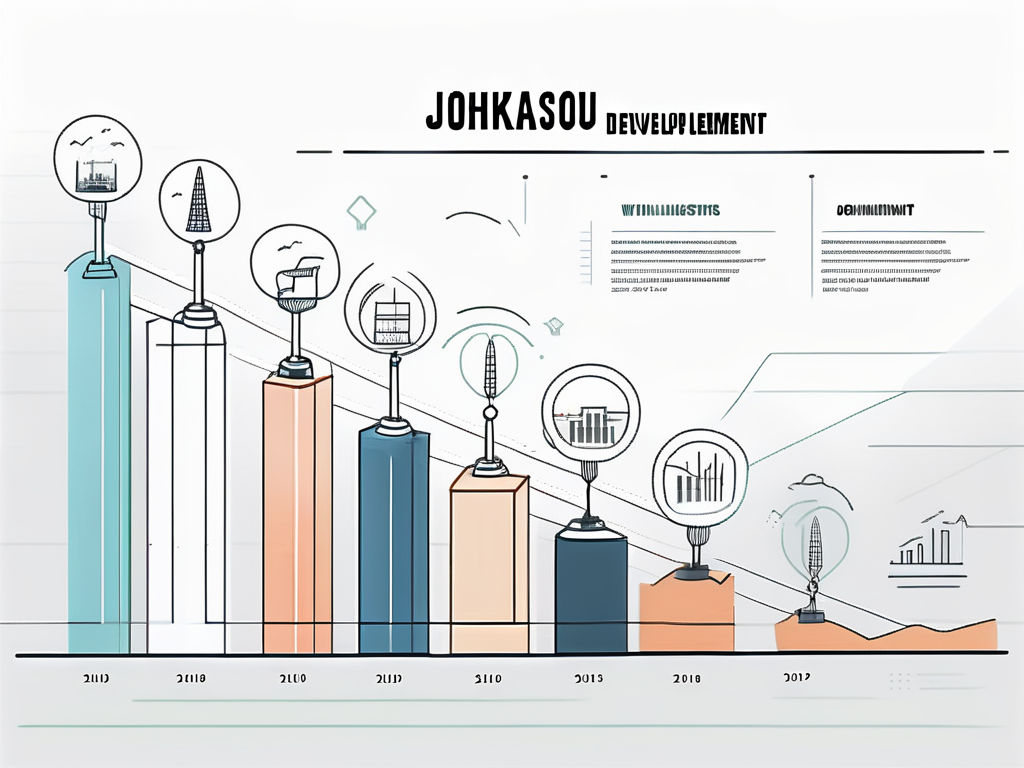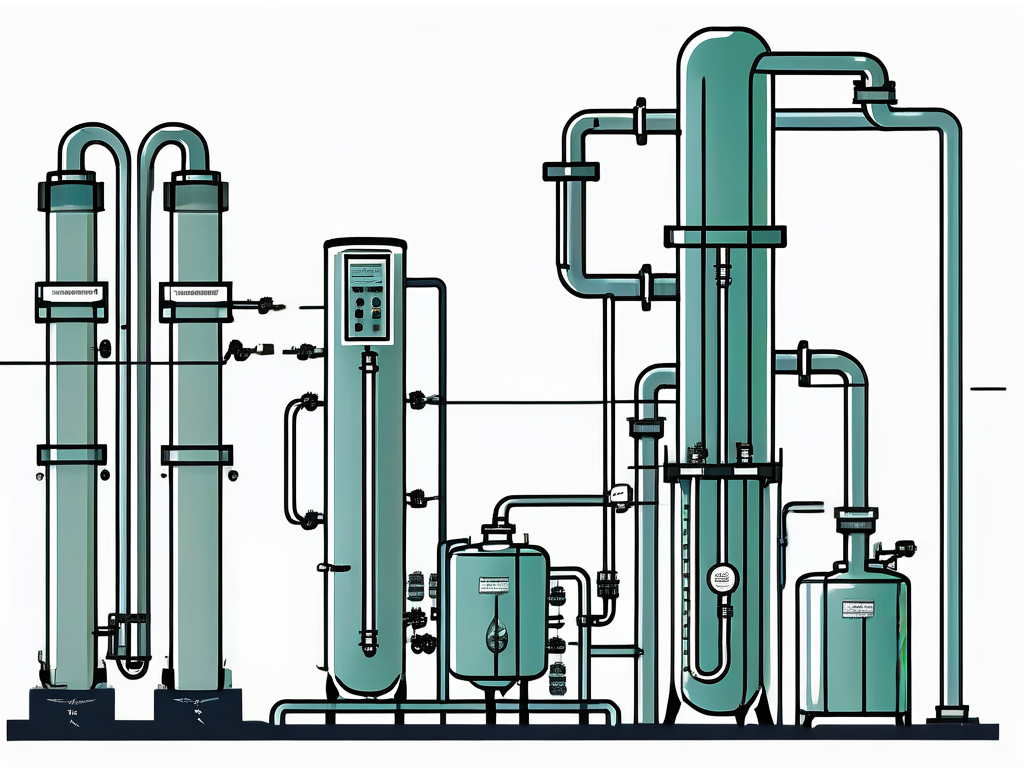
Johkasou: Wastewater Treatment Explained
Wastewater treatment is a crucial process in maintaining the health of our environment and, by extension, our own health. One method of wastewater treatment that has gained popularity, especially in Japan, is the use of Johkasou. Johkasou is a term that refers to a type of compact wastewater treatment system that is often used in areas where connection to a centralized sewage system is not possible or practical. This article will delve into the intricacies of Johkasou, its operation, benefits, and challenges.
Understanding Johkasou requires a comprehensive grasp of its components, the science behind its operation, and the context in which it is used. This article aims to provide a thorough explanation of these aspects, making it a valuable resource for anyone interested in wastewater treatment, environmental science, or Japanese infrastructure. By the end of this glossary entry, you should have a deep understanding of Johkasou and its role in wastewater treatment.
History and Development of Johkasou
The concept of Johkasou has its roots in Japan's rapid urbanization during the post-war era. As the population in urban areas surged, so did the need for effective wastewater treatment systems. The traditional centralized sewage systems were not able to keep up with the demand, especially in areas with difficult geographical conditions. This led to the development of Johkasou as a decentralized wastewater treatment solution.

Over the years, Johkasou systems have evolved significantly. From simple septic tanks, they have transformed into sophisticated treatment systems capable of removing organic matter, suspended solids, and even nutrients like nitrogen and phosphorus from wastewater. This evolution has been driven by advancements in technology and a growing understanding of the environmental impact of untreated wastewater.
Regulation and Standardization
As the use of Johkasou systems became more widespread, the need for regulation and standardization became apparent. In 1971, the Japanese government introduced the Johkasou Act, which set standards for the design, installation, and maintenance of Johkasou systems. This was a significant step towards ensuring the effectiveness and reliability of these systems.
Over the years, the standards set by the Johkasou Act have been revised and updated to reflect advancements in technology and our understanding of wastewater treatment. These standards now cover a wide range of aspects, from the materials used in the construction of Johkasou systems to the methods used for their maintenance and inspection.
Components and Operation of Johkasou
A Johkasou system is composed of several key components, each playing a crucial role in the treatment of wastewater. These components include the settling tank, aeration tank, secondary settling tank, and disinfection unit. Together, these components facilitate a multi-stage treatment process that effectively removes contaminants from wastewater.

The operation of a Johkasou system begins with the settling tank, where heavy solids in the wastewater are allowed to settle at the bottom. The clarified water then moves to the aeration tank, where air is pumped in to facilitate the growth of aerobic bacteria. These bacteria consume organic matter in the wastewater, transforming it into harmless byproducts.
Aeration Process
The aeration process in a Johkasou system is a critical step in the treatment of wastewater. By introducing air into the wastewater, aerobic bacteria are able to thrive and consume organic matter. This process not only removes harmful contaminants but also helps to reduce the biological oxygen demand (BOD) of the wastewater, which is a key indicator of its environmental impact.
There are several methods of aeration used in Johkasou systems, including diffused aeration and mechanical aeration. The choice of aeration method depends on a variety of factors, including the size of the system, the type of wastewater being treated, and the specific requirements of the treatment process.
Secondary Settling and Disinfection
After the aeration process, the wastewater moves to the secondary settling tank. Here, the remaining solids in the wastewater are allowed to settle, further clarifying the water. The clarified water is then disinfected, typically using chlorine or ultraviolet light, to kill any remaining pathogens.
The disinfection process is a crucial step in ensuring the safety of the treated wastewater. While the previous stages of the treatment process remove most contaminants, they may not be sufficient to eliminate all pathogens. Disinfection ensures that the treated wastewater is safe for discharge into the environment or for reuse in non-potable applications.
Benefits of Johkasou
Johkasou systems offer several benefits over traditional centralized sewage systems. One of the main advantages is their flexibility. Johkasou systems can be installed in a wide range of settings, from rural areas to densely populated urban centers. They are particularly useful in areas with difficult geographical conditions, where the installation of a centralized sewage system may not be feasible.
Another major benefit of Johkasou systems is their environmental impact. By treating wastewater at the source, Johkasou systems can significantly reduce the amount of pollution that enters our waterways. Furthermore, the treated wastewater can be reused for non-potable applications, such as irrigation, further reducing the demand for fresh water.
Energy Efficiency
Johkasou systems are also known for their energy efficiency. The treatment process used in Johkasou systems is primarily biological, relying on the natural processes of bacteria to remove contaminants. This reduces the need for energy-intensive treatment methods, making Johkasou systems a more sustainable option for wastewater treatment.
Moreover, the decentralized nature of Johkasou systems can also contribute to energy savings. By treating wastewater close to the source, the need for long-distance transport of wastewater is eliminated. This can result in significant energy savings, especially in large urban areas where the distances involved can be considerable.
Cost-Effectiveness
From a financial perspective, Johkasou systems can be a cost-effective solution for wastewater treatment. The initial installation cost of a Johkasou system can be higher than that of a septic tank. However, when considering the long-term costs, including maintenance and operation, Johkasou systems often prove to be more economical.
Additionally, the potential for wastewater reuse can also contribute to the cost-effectiveness of Johkasou systems. By reusing treated wastewater for non-potable applications, the demand for fresh water can be reduced, resulting in significant cost savings.
Challenges and Limitations of Johkasou
Despite their many benefits, Johkasou systems also have their challenges and limitations. One of the main challenges is the need for regular maintenance. The biological processes used in Johkasou systems require a delicate balance of conditions, which can be disrupted by factors such as changes in the composition of the wastewater or fluctuations in temperature. Regular maintenance is therefore crucial to ensure the effectiveness of the treatment process.
Another challenge is the disposal of sludge, a byproduct of the treatment process. While the volume of sludge produced by Johkasou systems is relatively small, it still needs to be disposed of in a safe and environmentally friendly manner. This can be a challenge, especially in areas with limited waste disposal facilities.
Technical Expertise
The operation and maintenance of Johkasou systems require a certain level of technical expertise. This can be a challenge in areas where such expertise is not readily available. Training and capacity building are therefore crucial to ensure the successful implementation of Johkasou systems.
Moreover, the design and installation of Johkasou systems also require technical expertise. This is particularly important in the case of large-scale systems, where the complexity of the system can be considerable. Without the necessary expertise, the effectiveness and reliability of the system can be compromised.
Public Perception
Public perception can also be a challenge for the implementation of Johkasou systems. In some cultures, there may be a stigma associated with the use of treated wastewater, even for non-potable applications. This can be a significant barrier to the acceptance and adoption of Johkasou systems.
Education and awareness-raising are therefore crucial to overcome this challenge. By informing the public about the benefits of Johkasou systems and the safety of treated wastewater, it is possible to change perceptions and encourage the acceptance of these systems.
Future of Johkasou
The future of Johkasou looks promising. With the growing recognition of the need for sustainable wastewater treatment solutions, the demand for Johkasou systems is likely to increase. Advances in technology are also expected to improve the efficiency and effectiveness of Johkasou systems, further enhancing their appeal.
However, the success of Johkasou in the future will depend on our ability to overcome the challenges and limitations discussed above. By investing in research and development, training and capacity building, and public education, we can ensure that Johkasou continues to play a crucial role in wastewater treatment in the years to come.
Technological Advancements
Technological advancements are likely to play a key role in the future of Johkasou. Developments in areas such as sensor technology and data analytics could enable more efficient operation and maintenance of Johkasou systems. For example, sensors could be used to monitor the conditions in the system in real time, allowing for proactive maintenance and preventing disruptions to the treatment process.
Similarly, data analytics could be used to optimize the operation of Johkasou systems. By analyzing data on factors such as the composition of the wastewater and the performance of the system, it may be possible to make adjustments that improve the efficiency and effectiveness of the treatment process.
Policy and Regulation
Policy and regulation will also play a crucial role in the future of Johkasou. As the use of Johkasou systems expands, it will be important to ensure that they are regulated in a way that ensures their effectiveness and reliability, while also promoting innovation and development.
Moreover, policies that encourage the use of sustainable wastewater treatment solutions, such as incentives for the installation of Johkasou systems, could also help to drive the adoption of these systems. By creating a supportive policy environment, we can ensure that Johkasou continues to play a key role in wastewater treatment in the future.
Conclusion
In conclusion, Johkasou is a versatile and effective solution for wastewater treatment. Its flexibility, environmental benefits, and cost-effectiveness make it an attractive option for a wide range of settings. However, it also has its challenges and limitations, which need to be addressed to ensure its success in the future.
By investing in research and development, training and capacity building, and public education, we can overcome these challenges and ensure that Johkasou continues to play a crucial role in wastewater treatment. With the right support, Johkasou has the potential to make a significant contribution to the sustainability of our water resources and the health of our environment.



